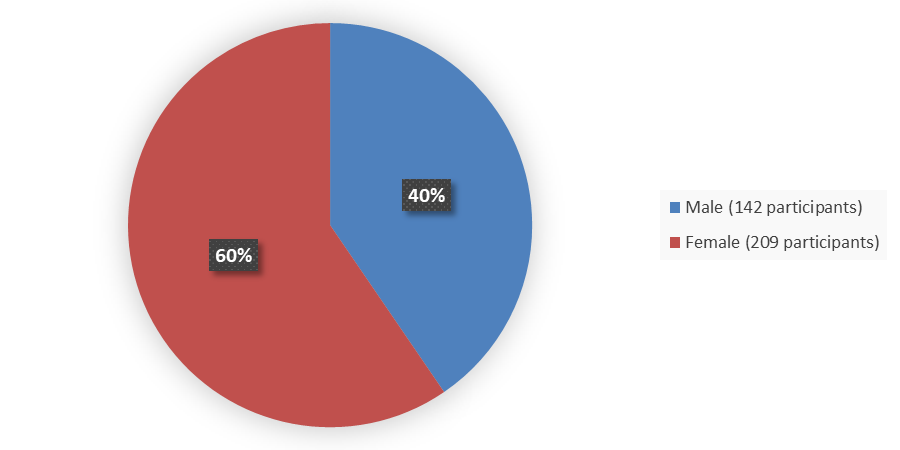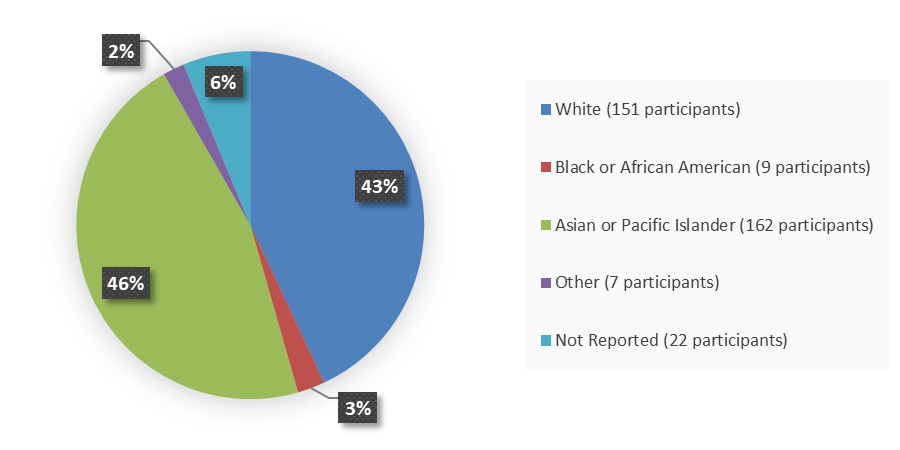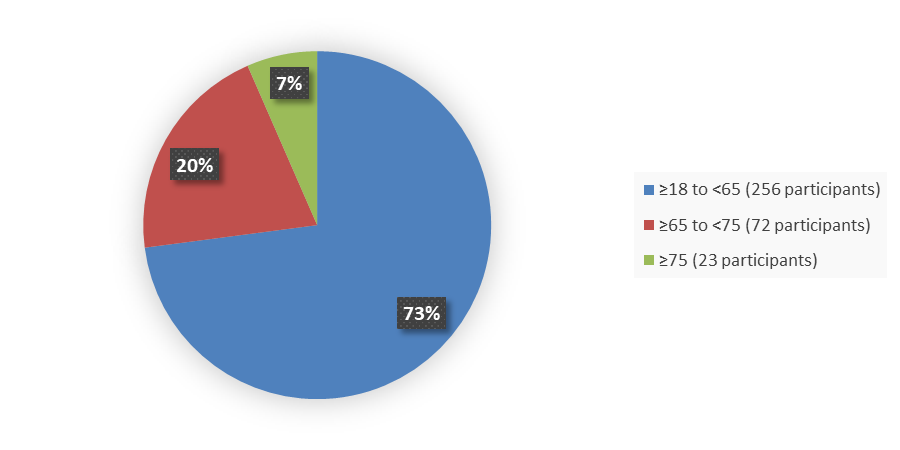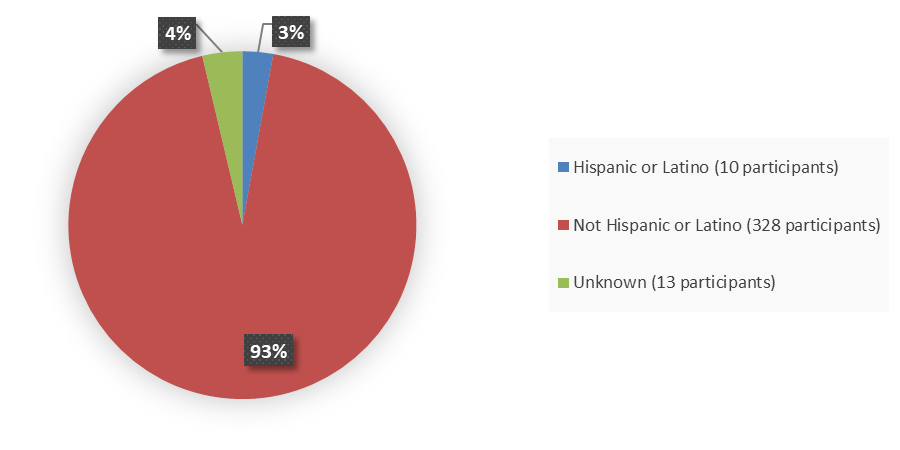Drug Trials Snapshots: AUGTYRO
HOW TO USE THIS SNAPSHOT
The information provided in Snapshots highlights who participated in the key clinical trials that supported the original FDA approval of this drug, and whether there were differences among sex, race, age, and ethnic groups. The “MORE INFO” bar shows more detailed, technical content for each section. The Snapshot is intended as one tool for consumers to use when discussing the risks and benefits of the drugs.
LIMITATIONS OF THIS SNAPSHOT
Do not rely on Snapshots to make decisions regarding medical care. Always speak to your healthcare provider about the benefits and risks of a drug.
Some of the information in this Snapshot is for presentation purposes and does not represent the approved conditions of use of this drug. Refer to the AUGTYRO Prescribing Information for all the approved conditions of use of this drug (e.g., indication(s), population(s), dosing regimen(s), safety information).
Snapshots are limited to the information available at the time of the original approval of the drug and do not provide information on who participated in clinical trials that supported later approvals for additional uses of the drug (if applicable).
AUGTYRO (repotrectinib)
Aug-TYE-ro
BRISTOL MYERS SQUIBB CO
Approval date: November 15, 2023
DRUG TRIALS SNAPSHOT SUMMARY:
What is the drug for?
AUGTYRO is a drug used to treat adult patients with advanced or metastatic ROS1-positive non-small cell lung cancer (NSCLC).
How is this drug used?
AUGTYRO is a capsule taken by mouth at 160 mg once daily for 14 days, then increased to 160 mg twice daily, with or without food.
Who participated in the clinical trials?
The FDA approved AUGTYRO based on evidence from one clinical trial (NCT03093116/TRIDENT-1) in adult patients with NSCLC that had changes in the ROS1 gene. The trial was conducted at 152 sites in the United States, the United Kingdom, Canada, the European Union, and Asia (China, Japan, South Korea, Singapore, Hong Kong, and Taiwan). There were 154 patients treated in the United States and 290 treated outside the United States.
The safety of AUGTYRO was evaluated in 351 patients who received at least one dose at the recommended phase 2 dose in TRIDENT-1. The median age of patients who received AUGTYRO was 56 years (range: 20 to 93); 59.5% female; 46.2% Asian, 43% White, 2.6% Black, 0.6% Native Hawaiian or other Pacific Islander, 0.3% American Indian or Alaska Native, 6.3% race not reported, and 0.9% unknown. Some of these patients provided data for the assessment of the benefits of AUGTYRO for ROS1-positive NSCLC.
The efficacy of AUGTYRO was evaluated in two groups of patients in the TRIDENT-1 trial:
- There were 71 patients in the group of patients with ROS1-positive NSCLC who had not received a prior drug that inhibits ROS1. Characteristics of this group are as follows: median age was 57 years (range: 28 to 80); 60.6% female; 67.6% Asian, 25.4% White, 1.4% Black or African American; and 4.2% Hispanic or Latino.
- There were 56 patients in the group of patients with ROS1-positive NSCLC who had received one prior ROS1-targeted therapy but had not received prior platinum-based chemotherapy or immunotherapy. Characteristics of this group are as follows: median age was 57 years (range: 33 to 78); 67.9% female; 48.2% Asian, 44.6% White, 1.8 % Black or African American; and 1.8 % Hispanic or Latino.
How were the trials designed?
The benefits and side effects of AUGTYRO for patients with NSCLC that are ROS1-positive were evaluated in one clinical trial. Some patients were previously treated with a drug that inhibits ROS1 for their ROS1-positive NSCLC (pretreated subgroup) and some had not received prior treatment with a drug that inhibits ROS1 (treatment-naïve subgroup). All patients received AUGTYRO by mouth once daily for 14 days, then increased to 160 mg twice daily until either cancer progression or intolerable side effects.
The benefit of AUGTYRO was evaluated by measuring the percentage of patients who had complete or partial shrinkage of their tumors (overall response rate or ORR) and by measuring the duration of that benefit (duration of response or DOR).
How were the trials designed?
There was one first-in-human, multi-center, open-label trial that provided data to evaluate safety and the efficacy of AUGTYRO in patients with advanced solid tumors harboring ALK, ROS1, or NTRK1-3 rearrangements.
The efficacy of AUGTYRO for ROS1-positive NSCLC was evaluated in adult patients among pooled cohorts EXP-1 and EXP-4 in the TRIDENT-1 study. Patients were ROS1 tyrosine-kinase inhibitor-naïve or pretreated with or without prior platinum-based chemotherapy and received at least one dose of AUGTYRO.
Patients received AUGTYRO as a capsule taken by mouth once daily for 14 days, then increased to twice daily, until unacceptable toxicity or disease progression. The major efficacy outcome measure for all cohorts was ORR and additional measure was DOR as determined by a blinded independent review committee (BIRC) according to Response Evaluation Criteria in Solid Tumors (RECIST) v1.1.
Safety assessment was done on all patients who received at least one dose of AUGTYRO at the recommended phase 2 dose.
DEMOGRAPHICS SNAPSHOT
The pooled safety population for this NDA includes 351 adult patients with advanced solid tumors harboring changes (rearrangements) in the ALK, ROS1, or NTRK1-3 genes who received AUGTYRO.
Figure 1 summarizes how many male and female patients were enrolled in the clinical trial used to evaluate the efficacy of AUGTYRO.
Figure 1. Baseline Demographics by Sex
Source: Adapted from FDA Review
Figure 2 summarizes the percentage of patients by race enrolled in the clinical trial used to evaluate the efficacy of AUGTYRO.
Figure 2. Baseline Demographics by Race
Source: Adapted from FDA Review
Figure 3 summarizes the percentage of patients by age enrolled in the clinical trial used to evaluate the efficacy of AUGTYRO.
Figure 3. Baseline Demographics by Age
Source: Adapted from FDA Review
Figure 4 summarizes the percentage of patients by ethnicity enrolled in the clinical trial used to evaluate the efficacy of AUGTYRO.
Figure 4. Baseline Demographics by Ethnicity
Source: Adapted from FDA Review
Who participated in the trials?
Table 1. Baseline Demographics of Efficacy Trials by Age, Race, Sex, and Ethnicity for ROS1-Positive NSCLC Patients
|
Demographic |
ROS1 Inhibitor Naïve Patients N=71 |
ROS1 Inhibitor Pretreated Patients |
|
Age, years |
|
|
|
Mean |
55.5 |
55.9 |
|
Median |
57.0 |
57.0 |
|
Min, max |
28, 80 |
33, 78 |
|
Sex, n (%) |
|
|
|
Female |
43 (60.6) |
38 (67.9) |
|
Male |
28 (39.4) |
18 (32.1) |
|
Race, n (%) |
|
|
|
Asian |
48 (67.6) |
27 (48.2) |
|
White |
18 (25.4) |
25 (44.6) |
|
Black or African American |
1 (1.4) |
1 (1.8) |
|
Native Hawaiian or other Pacific Islander |
1 (1.4) |
1 (1.8) |
|
Not reported |
3 (4.2) |
1 (1.8) |
|
Unknown |
0 |
1 (1.8) |
|
Ethnicity, n (%) |
|
|
|
Hispanic or Latino |
3 (4.2) |
1 (1.8) |
|
Not Hispanic or Latino |
68 (95.8) |
53 (94.6) |
Insert source: Adapted from FDA Review
Abbreviations: NSCLC, non-small cell lung cancer
What are the benefits of this drug?
In the trial, 79% of the 71 patients with ROS1-positive NSCLC who were ROS1 inhibitor naïve experienced complete or partial shrinkage of their tumors; 91% of these patients had complete or partial shrinkage of their tumors which lasted more than six months.
In the trial, 38% of the 56 patients with ROS1-positive NSCLC who were pretreated with an ROS1 inhibitor experienced complete or partial shrinkage of their tumors which lasted more than six months for 80% of patients.
What are the benefits of this drug (results of trials used to assess efficacy)?
Table 2 summarizes efficacy results for the indication based on ORR as determined by a BIRC according to RECIST v1.1. An additional efficacy outcome measure was DOR by BIRC.
Table 2. Efficacy Results for Patients With ROS1-Positive NSCLC in TRIDENT-1
|
Efficacy Parameter |
ROS1 Inhibitor Naïve Patients N=71 |
ROS1 Inhibitor Pretreated Patients N=56 |
|
Confirmed ORR, % (95% CI) |
78.9 (67.6, 87.7) |
37.5 (24.9, 51.5) |
|
Complete response, n (%) |
4 (5.6) |
3 (5.4) |
|
Partial response, n (%) |
52 (73.2) |
18 (32.1) |
|
Duration of response |
|
|
|
Median DOR, months (95% CI) |
27.40 (23.10, NE) |
17.81 (7.56, NE) |
|
DOR ≥6 months (min, max) |
90.7 (82.9, 98.5) |
79.5 (61.5, 97.5) |
Source: Adapted from FDA Review and AUGTYRO Prescribing Information
Abbreviations: CI, confidence interval; DOR, duration of response; NE, not evaluable; ORR, overall response rate
Were there any differences in how well the drug worked in clinical trials among sex, race, and age?
- Sex: AUGTYRO worked similar in males and females.
- Race: AUGTYRO worked similar in Asian, Black or African American, and White patients.
- Age: AUGTYRO worked similarly in patients younger and older than 65 years of age.
Were there any differences in how well the drug worked in clinical trials among sex, race, and age groups?
Table 3 and Table 4 summarize ORR and DOR by sex, race, and age subgroups. Results should be interpreted cautiously given the small number of patients in each subgroup.
Table 3. Efficacy Results by Sex, Race, Age, and Ethnicity, For ROS1 Inhibitor Naïve Patients
|
Subgroup |
Responders n/N |
Confirmed ORR % (95% CI) |
DORa Median (95% CI) |
|
Sex |
|
|
|
|
Female |
36/43 |
83.7 (69.3, 93.2) |
34.10 (27.40, NE) |
|
Male |
20/28 |
71.4 (51.3, 86.8) |
25.59 (25.59, NE) |
|
Race |
|
|
|
|
Asian |
39/48 |
81.3 (67.4, 91.1) |
34.10 (23.10, NE) |
|
White |
14/18 |
77.8 (52.4, 93.6) |
NE (27.40, NE) |
|
Black |
0/1 |
0 |
NA |
|
Other |
1/1 |
100 |
NE |
|
Not reported |
2/3 |
66.7 (9.4, 99.2) |
NE |
|
Ethnicity |
|
|
|
|
Hispanic or Latino |
1/3 |
33.3 (0.8, 90.6) |
NE |
|
Not Hispanic or Latino |
55/68 |
80.9 (69.5, 89.4) |
34.10 (25.59, NE) |
|
Age, years |
|
|
|
|
18 to ≤65 |
44/56 |
78.6 (65.6, 88.4) |
34.10 (25.59, NE) |
|
>65 |
12/15 |
80.0 (51.9, 95.7) |
NE (5.52, NE) |
Source: Adapted from FDA Review
a DOR results are based on the updated data as of 19 December 2022
b Median DOR (95% CI) are based on Kaplan-Meier estimates.
Abbreviations: CI, confidence interval; DOR, duration of response; NA, not applicable; NE, not estimable; ORR, objective response rate
Table 4. Efficacy Results by Sex, Race, Age, and Ethnicity, For ROS1 Inhibitor Pretreated Patients
| Subgroup |
Responders n/N |
Confirmed ORR % (95% CI) |
DORa Median (95% CI) |
|
Sex |
|
|
|
|
Female |
14/38 |
36.8 (21.8, 54.0) |
9.30 (7.39, NE) |
|
Male |
7/18 |
38.9 (17.3, 64.3) |
7.46 (4.50, NE) |
|
Race |
|
|
|
|
Asian |
9/27 |
33.3 (16.5, 54.0) |
NE (5.55, NE) |
|
White |
10/25 |
40.0 (21.1, 61.3) |
16.28 (7.69, NE) |
|
Black |
0/1 |
0 |
NA |
|
Other |
1/1 |
100 |
NE |
|
Not reported |
1/1 |
100 |
3.68 |
|
Unknown |
0/1 |
0 |
NA |
|
Ethnicity |
|
|
|
|
Hispanic or Latino |
0/1 |
0 |
NA |
|
Not Hispanic or Latino |
20/53 |
37.7 (24.8, 52.1) |
17.81 (7.56, NE) |
|
Unknown |
1/2 |
50.0 (1.3, 98.7) |
3.68 |
|
Age, years |
|
|
|
|
18 to ≤65 |
15/42 |
35.7 (21.6, 52.0) |
9.23 (5.55, 17.81) |
|
>65 |
6/14 |
42.9 (17.7, 71.1) |
NE (7.46, NE) |
Source: Adapted from FDA Review
a DOR results are based on the updated data as of 19 December 2022
b Median DOR (95% CI) are based on Kaplan-Meier estimates.
Abbreviations: CI, confidence interval; DOR, duration of response; NA, not applicable; NE, not estimable; ORR, objective response rate
What are the possible side effects?
AUGTYRO may cause serious side effects including brain and nervous system effects, lung injury, liver injury, muscle aches and increased enzymes, increased uric acid, bone fractures, and harm to unborn babies.
The most common side effects of AUGTYRO are dizziness, changes to taste, numbness or tingling in extremities, constipation, shortness of breath, unstable gait, fatigue, slow thinking, and muscular weakness.
What are the possible side effects (results of trials used to assess safety)?
Table 5 summarizes adverse reactions and laboratory abnormalities that occurred in patients with ROS1-positive NSCLC treated with AUGTYRO at the recommended phase 2 dose, 160 mg once daily for 14 days, then increased to 160 mg twice daily.
Table 5. Safety Results, Adverse Reactions (≥10%) in Patients With ROS1-Positzive NSCLC Treated With AUGTYRO
|
Adverse Reaction1 |
AUGTYRO N=264 |
|
|
All Grades % |
Grade 3 or 4 % |
|
|
Nervous system disorders |
|
|
|
Dizzinessa |
63 |
1.9 |
|
Dysgeusiab |
48 |
0 |
|
Peripheral neuropathyc |
47 |
1.9 |
|
Ataxiad |
28 |
0.4 |
|
Cognitive disorderse |
23 |
0.8 |
|
Headachef |
19 |
0 |
|
Gastrointestinal disorders |
|
|
|
Constipation |
36 |
0 |
|
Nausea |
19 |
0.4 |
|
Diarrhea |
13 |
0.4 |
|
Vomiting |
10 |
0.8 |
|
Respiratory, thoracic, and mediastinal disorders |
|
|
|
Dyspneag |
30 |
7 |
|
Coughh |
14 |
0 |
|
General disorders |
|
|
|
Fatiguei |
24 |
1.1 |
|
Edemaj |
12 |
0.8 |
|
Musculoskeletal and connective tissue disorders |
|
|
|
Muscular weakness |
21 |
1.5 |
|
Myalgiak |
12 |
0.4 |
|
Metabolism and nutritional |
|
|
|
Increased weight |
14 |
1.9 |
|
Eye disorders |
|
|
|
Vision disordersl |
11 |
0 |
Source: AUGTYRO Prescribing Information
1 Based on NCI CTCAE v4.03
a Includes terms dizziness, vertigo, dizziness postural, dizziness exertional, vertigo positional
b Includes terms dysgeusia, ageusia, anosmia, hypogeusia
c Includes terms neuralgia, neuropathy peripheral, peripheral sensory neuropathy, dysesthesia, peripheral motor neuropathy, polyneuropathy, paresthesia, hypoesthesia, hyperesthesia
d Includes terms ataxia, gait disturbance, balance disorder, cerebellar ataxia
e Includes terms memory impairment, disturbance in attention, cognitive disorder, confusional state, amnesia, attention deficit hyperactivity disorder, delirium, altered state of consciousness, aphasia, delusion, depressed level of consciousness, hallucination, mental status changes, neurological decompensation
f Includes terms headache, migraine, tension headache
g Includes terms dyspnea and dyspnea exertional
h Includes terms productive cough, cough, and upper-airway cough syndrome
i Includes terms fatigue and asthenia
j Includes terms generalized edema, periorbital edema, localized edema, face edema, edema peripheral, edema, eye edema, scrotal edema
k Includes terms myalgia, myositis, musculoskeletal discomfort, musculoskeletal pain
l Includes terms vision blurred, dry eye, visual impairment, visual field defect, cataract, conjunctivitis, eye pain, photophobia, photosensitivity reaction, visual acuity reduced, vitreous floaters, blepharospasm, color blindness, diplopia, eye hematoma, eye swelling, eyelid disorder, eyelid injury, eyelids pruritus, glaucoma, night blindness, ophthalmic herpes zoster
Abbreviations: NCI CTCAE, National Cancer Institute Common Terminology Criteria for Adverse Events; NSCLC, non-small cell lung cancer
Were there any differences in side effects among sex, race and age?
- Sex: The majority of patients were female. The number of male patients was limited; therefore, differences in the occurrence of side effects among male patients compared to female patients could not be determined.
- Race: The majority of patients were White. The number of patients in other races were limited; therefore, differences in in the occurrence of side effects among races could not be determined.
- Age: The majority of patients were younger than 65 years of age; therefore, differences in the occurrence of side effects among younger and older age groups could not be determined.
Were there any differences in side effects of the clinical trials among sex, race, and age groups?
Table 6, Table 7, and Table 8 summarize adverse events that occurred in sex, race, and age subgroups.
Table 6. Side Effects by Sex For Patients Who Received at Least One Dose at the Recommended Phase 2 Dose in TRIDENT-1
|
Parameter |
Male N=142 n (%) |
Female N=209 n (%) |
|
Patients with TEAEs |
141 (99) |
208 (100) |
|
Patients with TEAEs maximum severity ≥3 |
80 (56) |
93 (45) |
|
Patients with serious TEAEs |
56 (39) |
58 (28) |
|
Patients with fatal TEAEs |
9 (6) |
8 (4) |
Source: Adapted from FDA Review
Abbreviations: TEAE, treatment-emergent adverse event
Table 7. Side Effects by Race For Patients Who Received at Least One Dose at the Recommended Phase 2 Dose in TRIDENT-1
|
Parameter |
Asian N=162 n (%) |
White N=151 n (%) |
Black N=9 n (%) |
Other N=4 n (%) |
Not Reported N=22 n (%) |
Unknown N=3 n (%) |
|
Patients with TEAEs |
160 (99) |
151 (100) |
9 (100) |
4 (100) |
22 (100) |
3 (100) |
|
Patients with TEAEs maximum severity ≥3 |
74 (46) |
78 (52) |
5 (56) |
3 (75) |
11 (50) |
2 (67) |
|
Patients with serious TEAEs |
48 (30) |
49 (32) |
5 (56) |
2 (50) |
7 (32) |
3 (100) |
|
Patients with fatal TEAEs |
6 (4) |
9 (6) |
1 (11) |
0 |
1 (5) |
0 |
Source: Adapted from FDA Review
Abbreviations: TEAE, treatment-emergent adverse event
Table 8. Side Effects by Age For Patients Who Received at Least One Dose at the Recommended Phase 2 Dose in TRIDENT-1
|
Parameter |
18 to ≤65 Years N=271 n (%) |
>65 Years N=80 n (%) |
|
Patients with TEAEs |
270 (100) |
79 (99) |
|
Patients with TEAEs maximum severity ≥3 |
125 (46) |
48 (60) |
|
Patients with serious TEAEs |
83 (31) |
31 (39) |
|
Patients with fatal TEAEs |
10 (4) |
7 (9) |
Source: Adapted from FDA Review
Abbreviations: TEAE, treatment-emergent adverse event
GLOSSARY
CLINICAL TRIAL: Voluntary research studies conducted in people and designed to answer specific questions about the safety or effectiveness of drugs, vaccines, other therapies, or new ways of using existing treatments.
COMPARATOR: A previously available treatment or placebo used in clinical trials that is compared to the actual drug being tested.
EFFICACY: How well the drug achieves the desired response when it is taken as described in a controlled clinical setting, such as during a clinical trial.
PLACEBO: An inactive substance or “sugar pill” that looks the same as, and is given the same way as, an active drug or treatment being tested. The effects of the active drug or treatment are compared to the effects of the placebo.
SUBGROUP: A subset of the population studied in a clinical trial. Demographic subsets include sex, race, and age groups.
PRESCRIBING INFORMATION




